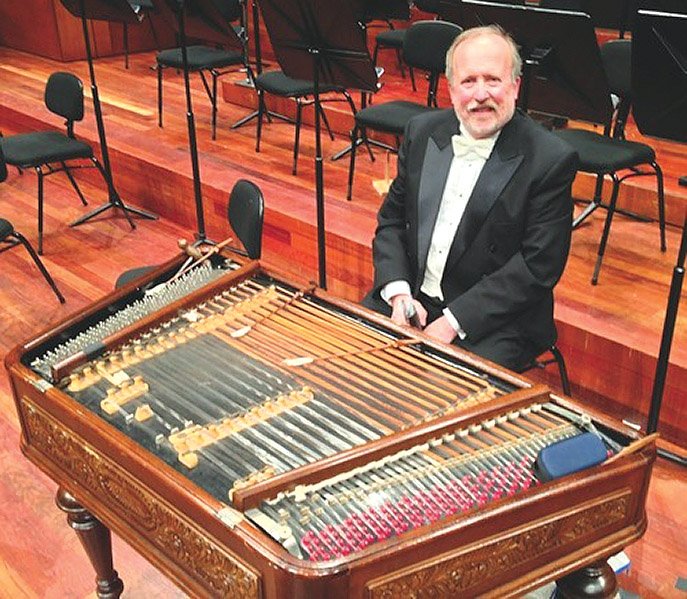Does A Hammered Dulcimer Need Holes: No, a hammered dulcimer does not need holes. The holes serve aesthetic purposes and aid in weight reduction but are not essential for sound production.
The Anatomy of a Hammered Dulcimer
- Soundboard: The soundboard is the flat, wooden surface that forms the top of the instrument. It serves as a resonating chamber, amplifying the vibrations produced by the strings.
- Bridge: The bridge is a wooden or metal structure that holds the strings in place. It is typically located in the center of the soundboard and transmits the vibrations from the strings to the soundboard.
- Strings: The hammered dulcimer has a series of strings stretched across the soundboard. These strings are struck with mallets to produce sound.
- Pin Blocks: The pin blocks are wooden structures located on either side of the soundboard. They hold the tuning pins, which are used to adjust the tension of the strings and tune the instrument.
- Holes: Now, let’s address the question at hand. The holes in a hammered dulcimer are not necessary for the instrument to produce sound. Instead, they serve two primary purposes:
- Aesthetics: The holes on the soundboard of a hammered dulcimer are often intricately designed and carved, adding to the instrument’s visual appeal. They enhance the instrument’s overall beauty and craftsmanship.
- Weight Reduction: The holes in the soundboard also help reduce the weight of the instrument without compromising its structural integrity. By removing sections of the wood, the instrument becomes more manageable to transport and play.

The Function of Holes in a Hammered Dulcimer
- Weight Reduction: As mentioned earlier, the holes in the soundboard help reduce the overall weight of the instrument. This is particularly important for larger dulcimers, as it allows musicians to handle and transport them more easily.
- Resonance Enhancement: The holes in the soundboard can affect the resonance and tonal characteristics of the instrument. By altering the surface area of the soundboard, the holes can modify the way sound waves propagate and interact, resulting in subtle changes in the instrument’s timbre and projection.
- Decoration and Artistry: The holes in a hammered dulcimer provide a canvas for artistic expression. Skilled craftsmen often incorporate intricate designs, patterns, or symbolic elements into the holes, making each instrument a unique work of art.
What are the tunings on a hammered dulcimer?
The hammered dulcimer can be tuned in various ways, depending on the desired musical repertoire and personal preferences of the musician. Common tunings include D-A-D, D-G-D, and G-D-G. These tunings refer to the pitches of the strings from low to high. Different tunings can produce different tonalities and facilitate playing in specific keys or modes. The choice of tuning allows musicians to explore diverse musical genres and adapt the instrument to their creative expression.

What is the difference between a hammered dulcimer and dulcimer?
The hammered dulcimer and the dulcimer are two distinct instruments, although they share a similar name. The primary difference lies in the method of sound production. In a hammered dulcimer, the strings are struck with small mallets or hammers, hence the name “hammered” dulcimer.
The dulcimer, on the other hand, is a stringed instrument that is plucked or strummed with the fingers or a pick. Additionally, the dulcimer is often a smaller, simpler instrument with fewer strings, while the hammered dulcimer is larger, more complex, and produces a richer, resonant sound.
Do you strike a hammered dulcimer?
Yes, the hammered dulcimer is played by striking the strings with small mallets or hammers. The musician holds the hammers in each hand and strikes the desired strings, producing sound through the vibrations created when the hammers make contact with the strings.
The player can vary the force and speed of the strikes to achieve different dynamics and tonal qualities. The hammered dulcimer’s unique sound is created through the combination of striking the strings and the instrument’s resonating soundboard.
Where does the hammered dulcimer have its roots?
The origins of the hammered dulcimer can be traced back to ancient times, with various forms of the instrument found in different cultures across the world. Its exact roots are challenging to pinpoint, as similar instruments have emerged independently in different regions.

However, the hammered dulcimer has a rich history in the Middle East, Asia, and Europe. It was popularized in medieval Europe and gained prominence in Eastern European and Middle Eastern folk music traditions. Today, the hammered dulcimer continues to be celebrated and cherished in various musical genres worldwide.
FAQs
Do the holes affect the sound quality of a hammered dulcimer?
No, the holes do not significantly impact the sound quality of a hammered dulcimer. The primary factors that affect sound production are the quality of the soundboard, the tension of the strings, and the mallets used to strike them.
Are the holes necessary for playing the hammered dulcimer?
No, the holes are not necessary for playing the hammered dulcimer. They serve more aesthetic and practical purposes, such as reducing the weight of the instrument and providing an artistic touch.
Can the holes be customized or modified?
Yes, the holes on a hammered dulcimer can be customized or modified to suit the preferences of the musician or the instrument’s overall design. Skilled artisans can create unique hole patterns or incorporate personalized engravings.
Conclusion
In conclusion, the holes in a hammered dulcimer serve primarily as decorative elements and aid in weight reduction. While they do not directly impact the sound production, they contribute to the instrument’s overall aesthetic appeal and play a subtle role in its resonance and tonal characteristics. The hammered dulcimer stands as a testament to the fusion of art and music, captivating listeners with its rich history and enchanting melodies.


